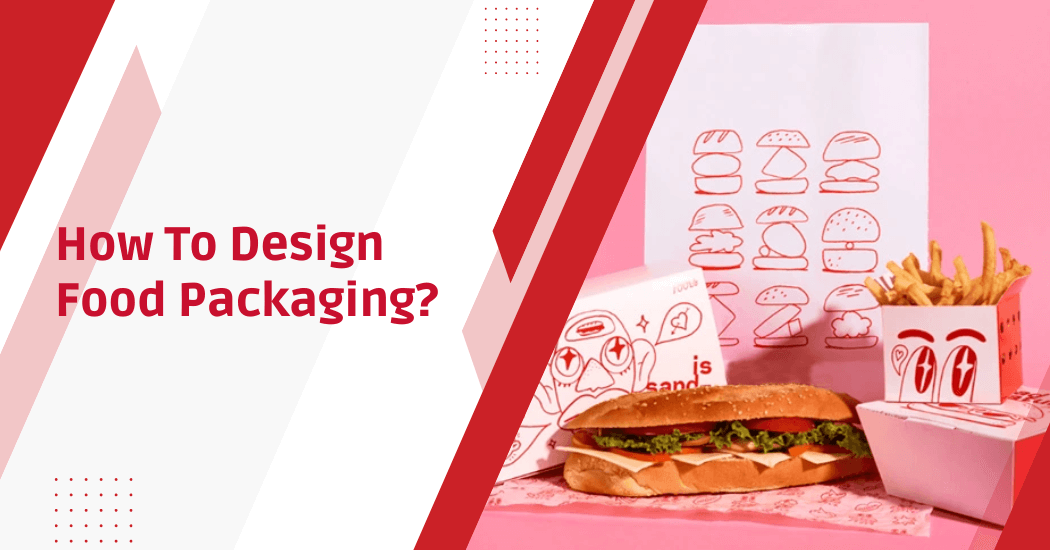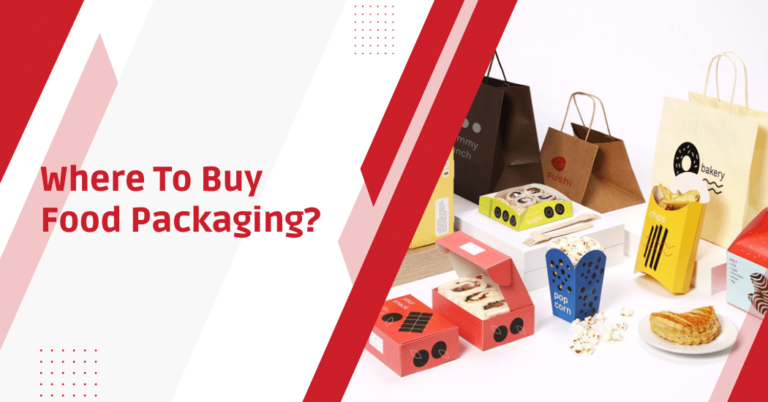How to design food packaging?
Designing food packaging is more than just making it visually appealing; it is a careful process that involves considering various factors such as functionality, branding and consumer psychology. The packaging of a food product plays a crucial role in attracting customers, conveying important information and distinguishing it from competitors.
From the font choice to the color scheme and materials used, each element of food packaging design is carefully chosen to create a captivating and memorable product.
In this blog post, we will explore the intricate art of designing food packaging and provide you with practical tips and tricks to create packaging that not only enhances the presentation of your product but also resonates with your target consumers.
So, whether you are a seasoned designer looking to delve into the world of food packaging or a food business owner wanting to revamp your product’s packaging, this article is your ultimate guide to creating outstanding and effective food packaging.
Food Packaging Design
1) Understanding the Product and Target Audience
First step in designing food packaging is gaining a deep understanding of the product and the target audience. This involves researching the product’s features, benefits and unique selling points. Knowing the target audience’s preferences, behaviors and lifestyles can also guide the design process.
2) Brainstorming and Sketching
Next, start brainstorming and sketching design ideas. This step involves considering different shapes, colors, typography and images that could make the packaging eye-catching and relevant to the product and the brand.
3) Design Development
Once you’ve selected a design direction, start to develop it further. This might involve creating computer-generated mock-ups of the packaging or creating physical prototypes. Make sure to include key elements such as the product name, brand logo and any necessary product information.
4) Regulatory Compliance
Ensure that your design complies with food packaging regulations. These typically include rules about labeling, including nutritional information and any relevant allergy warnings.
5) Testing and adjusting
Finally, test your packaging design with your target audience. This could involve focus groups or surveys. Use the feedback you receive to make any necessary adjustments to your design.
Remember, effective packaging design is a balance between aesthetics, function and consumer appeal.
Tips for successful food packaging design
- Sustainability: As consumers become more environmentally conscious, brands are shifting towards sustainable packaging. Consider using recycled and recyclable materials in your design. It’s not only good for the environment but also appeals to the eco-friendly consumer.
- Clear messaging: Avoid cluttering your package with too much information. Keep the design and messaging clear and concise. The product’s purpose, ingredients and any USPs should be instantly understandable.
- Versatility: Design your packaging to be flexible to accommodate slight variations for different flavors, sizes or versions of your product. This helps maintain brand consistency.
- Innovate: Don’t shy away from being innovative. Unique, innovative packaging can make your product stand out on the shelf. This could be in terms of shape, functionality or even a novel opening mechanism.
- Vivid colors: Colors play a crucial role in packaging design. They can help your product stand out and can also trigger psychological responses. For instance, red can invoke excitement, while green is often associated with health and tranquility. Use colors strategically to convey your product’s attributes.
- Consider the competition: Thoroughly research your competitors’ packaging to understand what works and what doesn’t. This can help you differentiate your product and avoid any design similarities.
- Including incentives: Consider including small incentives such as coupons or recipes on your packaging. These can entice consumers to purchase your product and also provide added value.
- Brand consistency: Your packaging design should align with your brand’s overall image and messaging. This helps create a cohesive brand identity and makes your product easily recognizable among other products in the market.
- Accessibility: Make sure to design packaging that is easy for consumers to open, close and handle. This can prevent frustration and increase consumer satisfaction.
- Adaptability: As trends and consumer preferences change, be willing to adapt your packaging design. This can help keep your product relevant in the ever-evolving market.
Factors that affect packaging design
- Cost: The budget allocated for packaging design can have a significant impact on the design choices made. Higher budgets may allow for more innovative and eye-catching designs, while lower budgets may require more simplistic designs.
- Consumer behavior: As consumer behavior shifts, so do their expectations for product packaging. It’s important to consider trends and preferences when designing packaging to ensure it resonates with the target audience.
- Product type: The type of product being packaged can also impact design choices. For example, liquid products may require different packaging materials and designs than solid products.
- Target market: Knowing your target market is crucial in creating effective packaging design. Different demographics have varying preferences and expectations, so it’s important to consider this when designing packaging.
- Brand image: The overall brand image and messaging should always be kept in mind when designing packaging. This helps maintain consistency and reinforces the brand’s identity.
- Shelf appeal: Packaging design plays a crucial role in standing out on the shelf among competitors. It’s important to consider how your design will catch the consumer’s eye and entice them to choose your product.
- Functionality: While aesthetics are important, packaging also serves a functional purpose in protecting and preserving the product. Design choices should prioritize both form and function.
- Regulations: Packaging design must adhere to various regulations such as food safety and labeling laws. These regulations may impact the design choices made.
- Environmental impact: As consumers become more environmentally conscious, the environmental impact of packaging is a growing consideration. Sustainable design choices can appeal to eco-friendly consumers.
Common mistakes to avoid when designing food packaging?
| Common Mistake | Description |
|---|---|
| Ignoring market research | Skipping market research can lead to a disconnect between what the consumer wants and what is delivered. Ensure your packaging design aligns with consumer preferences and expectations. |
| Inconsistent branding | Your product packaging should consistently reflect your brand’s identity. Inconsistencies can confuse consumers and weaken your brand image. |
| Overcomplicated design | While creativity is encouraged, an overcomplicated design can confuse consumers. Keep your design clear, simple and effective. |
| Failing to consider practicality | Functionality is as important as aesthetics. Poorly designed packaging that is hard to open, close or store can frustrate consumers, negatively impacting their overall experience. |
| Neglecting sustainability | With increasing environmental awareness, consumers often prefer eco-friendly packaging. Ignoring this can result in lost sales and potential backlash. |
| Not standing out | In a crowded market, your packaging needs to distinguish your product from the competition. Failing to create a unique, eye-catching design can make your product invisible on the shelf. |
| Ignoring adaptability | Trends evolve and consumer preferences shift over time. Ignoring the need for adaptability can result in outdated packaging that fails to engage your target audience. | |
| Poor quality materials | Low-quality packaging materials can damage the product and convey a negative impression about your brand. Always strive for quality while balancing cost considerations. |
| Overlooking regulations | Failing to adhere to packaging regulations and laws, such as those related to food safety and labeling, can lead to penalties and damage your brand’s reputation. |
| Misleading information | Any information displayed on the packaging should be accurate and truthful. Misleading consumers can harm your brand’s reputation and potentially lead to legal issues. |
Creative Ways To Design Food Packaging
Designing food packaging creatively is an art that blends aesthetics, functionality and brand messaging. Here are some innovative ways to approach this task:
- Incorporate unique shapes and structures: Think outside the box and consider using non-traditional packaging shapes, such as hexagons or triangles, to create a visually interesting design.
- Use sustainable materials: Consider using eco-friendly materials like biodegradable plastics, bamboo or recycled paper for your packaging. This not only appeals to environmentally-conscious consumers but also sets your brand apart.
- Tell a story: Use packaging design to tell a story about the product or brand, creating an emotional connection with consumers and making the product more memorable.
- Utilize interactive elements: Interactive packaging, such as peel-off stickers or hidden messages, can engage the consumer and create a memorable experience.
- Incorporate bold colors and graphics: Use bold colors and eye-catching graphics to create a visually striking design that stands out on the shelf.
- Add functional elements: Consider adding functional elements to your packaging, such as handles or resealable zippers, to make it easier for consumers to use and store the product.
- Collaborate with artists or designers: Partnering with artists or designers can bring a fresh perspective and unique style to your packaging design.
- Utilize minimalism: Sometimes less is more. Consider using a minimalist approach for your packaging design, focusing on simplicity and clean lines for an elegant and modern look.
- Incorporate unusual materials: Experiment with different materials like fabric or wood to create an unexpected and intriguing packaging design.
- Make it customizable: Allow consumers to customize their packaging, such as choosing from different designs or adding personalized messages, to create a more personal and memorable experience.
Overall, the key is to think creatively and outside the box when designing food packaging. By incorporating unique elements and considering consumer preferences, you can create a standout design that effectively represents your brand and product.
Wrap Up
Designing custom packaging is a multifaceted process that requires a thorough understanding of market trends, consumer preferences and regulatory requirements. It’s important to focus on creating a design that is not only visually appealing but also functional, sustainable and reflective of your brand’s identity.
Avoid common mistakes such as ignoring market research, using poor-quality materials and overlooking regulations to ensure your packaging is effective and well-received. Remember, creativity is key.
By incorporating unique shapes, sustainable materials, interactive elements and bold colors, you can stand out in the crowded market and engage your target audience.
Additionally, considering adaptability and future trends will ensure your packaging remains relevant and appealing over time.

